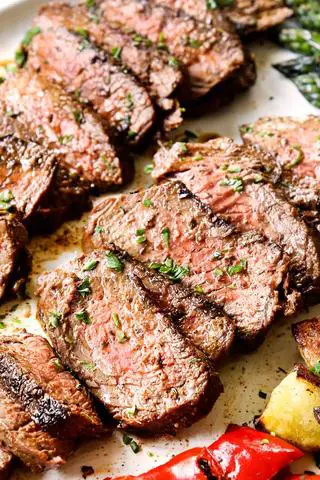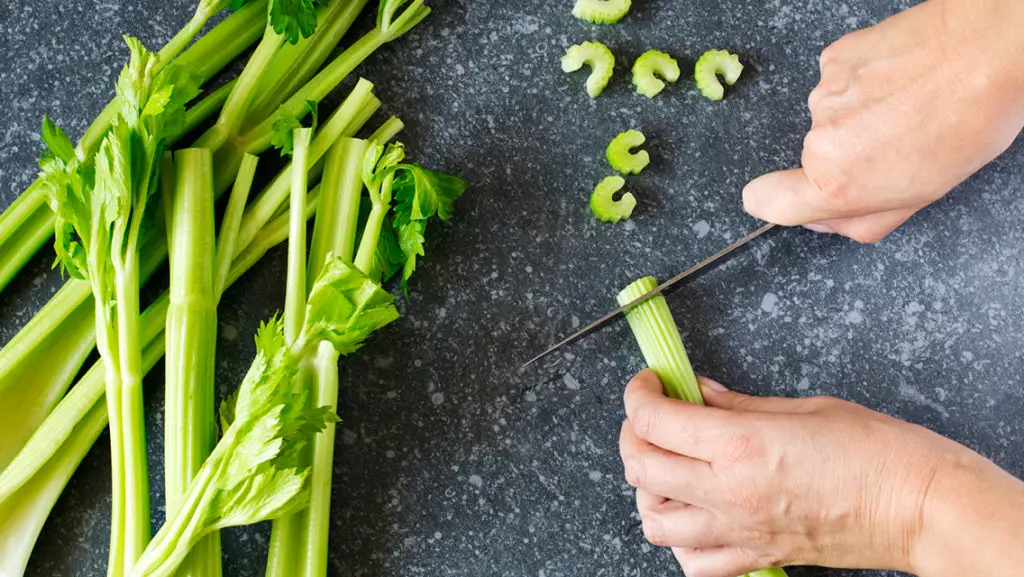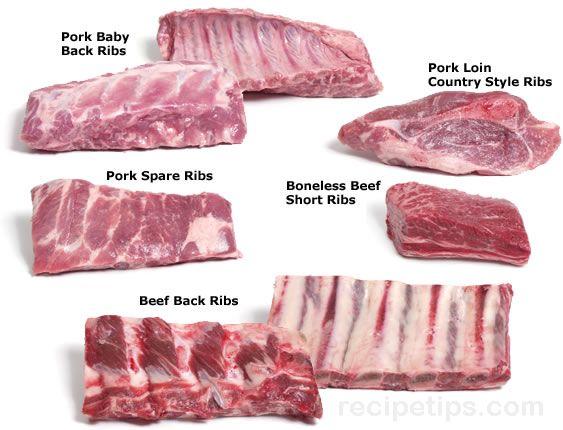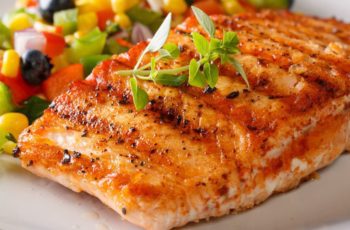
What does salmon taste like? This is a question that often comes up among those who are interested in trying this particular type of fish. While some people say it tastes like chicken, others assert that its flavor is more robust and earthy. In any case, salmon is a popular seafood choice due to its many health benefits. In this blog post, we’ll discuss what salmon tastes like and provide some recipes for you to try. We hope you enjoy it!

What does salmon taste like?
Salmon has a mild yet slightly sweet flavor that is similar to lobster or crab. Its texture is firm but moist, making it perfect for a variety of dishes. Whether you’re grilling, baking, or even eating it raw, salmon is a delicious and healthy option.
Here are the flavors of some typical types of salmon:
Pink Salmon: Milder in taste with a softer texture
Sockeye Salmon: Also known as “red salmon,” this type has a richer flavor and firmer texture.
Chum Salmon: A milder tasting salmon that is often used in canned salmon.
Coho Salmon: A delicate, light-colored salmon with a slightly sweet flavor.
Canned Salmon: Often has a stronger flavor than fresh salmon.
King Salmon: The richest and most flavorful of all the salmon, king salmon is also the most expensive.
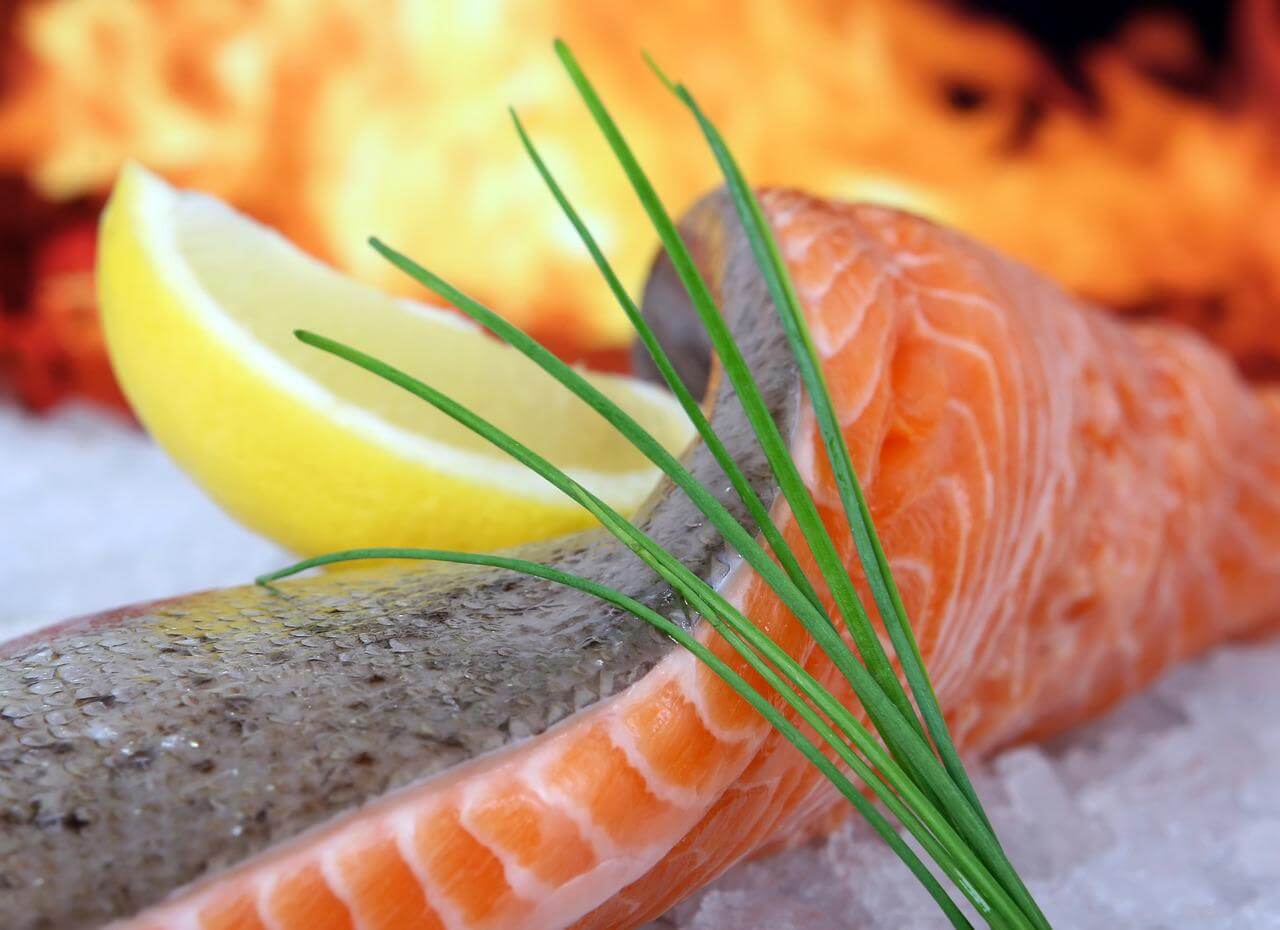
What Is Salmon?
Salmon is a type of fish that belongs to the same family as trout and char. It’s found in both the Atlantic and Pacific oceans and can grow to be quite large. Salmon are anadromous fish, meaning they travel from freshwater rivers to the ocean to spawn. They’re born in freshwater but migrate to saltwater as they mature.
Nutritional benefits of salmon:
Protein: Salmon is a great source of protein, which is essential for growth and repair.
Omega-3 fatty acids: These healthy fats have been shown to protect against heart disease and stroke. They’re also beneficial for brain health and development.
Vitamins and minerals: Salmon is a good source of vitamins A and D, as well as the minerals selenium and phosphorus.
Low in mercury: Salmon contains low levels of mercury, making it a safe choice for pregnant women and young children.
History of Eating Salmon:
Salmon has been a part of human diets for centuries. It’s thought that the first people to eat salmon were Native Americans who lived in the Pacific Northwest. They would catch salmon using spears and nets, then smoke or dry it for storage. Today, salmon is still an important food source for many Indigenous communities.
Salmon is also popular in other parts of the world. In Europe, smoked salmon is often eaten as a delicacy. In Japan, sushi and sashimi made with fresh salmon are very popular. And in North America, grilled or baked salmon is a common meal.
Types of Salmon:
There are many different types of salmon, which can be classified by their color, size, and taste. The most common types of salmon are pink, sockeye, chinook, chum, and coho.
How to Choose Salmon
When shopping for salmon, you’ll want to look for fresh, high-quality fish. If you’re buying the whole salmon, look for fish with bright eyes, firm flesh, and no signs of bruising. The skin should be shiny and free of blemishes. You should also smell the salmon to make sure it doesn’t have a strong fishy odor.
If you’re buying pre-packaged salmon, look for packages that are tightly sealed and free of any leaks or damage. The salmon should be refrigerated and have a label that shows the date it was packaged. Avoid salmon that looks dull or has dark patches, as this may be a sign of spoilage.
What Does Salmon Smell Like?
Salmon should have a mild, slightly sweet smell. If it smells fishy or ammonia-like, it’s probably not fresh.
What’s The Texture Of Salmon?
Salmon has a firm yet moist texture. The flesh should be pink or red in color, with a white layer of fat running along the center. There should be no browning or dark spots.
Does Salmon Have A Fishy Taste?
The flavor of salmon depends on the type of fish and how it’s prepared. In general, salmon has a mild yet slightly sweet flavor. It’s often compared to crab or lobster in terms of taste. Some types of salmon, such as sockeye or king salmon, have a richer flavor due to their higher fat content. Other types, such as chum or pink salmon, are milder in taste.
Smoked salmon has a distinctively smoky flavor that is caused by the process of smoking the fish. Canned salmon often has a stronger flavor than fresh salmon due to the canning process.
How to Store Salmon
If you’re not going to cook your salmon right away, you’ll need to store it properly to keep it fresh. Fresh salmon can be stored in the refrigerator for up to two days. If you’re not planning on cooking it within that time frame, you can freeze it for up to six months.
When storing frozen salmon, be sure to wrap it tightly in freezer-safe packaging. This will help prevent freezer burn and keep the fish fresh. When you’re ready to cook the salmon, thaw it in the refrigerator overnight. Do not thaw frozen salmon at room temperature, as this can cause bacteria to grow.
How to Prepare Salmon
There are many different ways to prepare salmon, so you’re sure to find a recipe that you’ll love. Salmon can be grilled, baked, smoked, or even eaten raw. It’s also often used in canned salmon.
If you’re new to cooking salmon, start with a simple recipe. Try grilling or baking the fish and serving it with lemon and herbs. As you become more comfortable cooking salmon, you can experiment with different methods and flavorings.
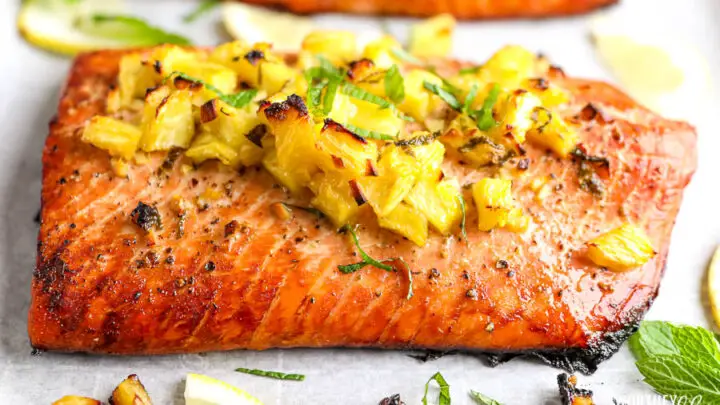
How to Cook Salmon:
Salmon can be cooked in a variety of ways. It can be grilled, baked, broiled, or even eaten raw. When cooking salmon, it’s important not to overcook it. The best way to tell if salmon is cooked is to use a digital cooking thermometer. Salmon is cooked through when it reaches an internal temperature of 145 degrees Fahrenheit.
Here are some tips for cooking delicious salmon:
– Season your salmon with salt, pepper, and other herbs or spices of your choice.
– Cook salmon skin-side down to prevent it from sticking to the grill or baking sheet.
– Use a digital cooking thermometer to check the internal temperature of the salmon. 145 degrees Fahrenheit is perfect!
– Let salmon rest for a few minutes after cooking to allow the juices to redistribute.
How to Freeze Salmon
If you have leftover salmon that you want to save for later, freezing is a great option. Salmon can be frozen cooked or raw. To freeze cooked salmon, first, place it in an airtight container or freezer-safe bag. Squeeze out any excess air and seal the container tightly. Label the container with the date and type of salmon. Cooked salmon will last for up to four months in the freezer.
To freeze raw salmon, first, wrap it tightly in plastic wrap or place it in a freezer-safe bag. Remove as much air from the bag as possible before sealing it shut. Label the bag with the date and type of salmon. Raw salmon will last for up to six months in the freezer.
Thawing Frozen Salmon
When you’re ready to eat your frozen salmon, it’s important to thaw it properly. Never thaw salmon at room temperature, as this can cause bacteria to grow. Instead, thaw the salmon in the fridge overnight. You can also thaw it by placing it in a bowl of cold water. Change the water every 30 minutes until the salmon is thawed. Once thawed, cook the salmon immediately. Do not refreeze.
FAQs
How to Make Salmon Taste Milder?
If you find that salmon has a strong fishy taste, there are a few things you can do to make it taste milder. First, try marinating the salmon in lemon juice or another acidic ingredient. This will help to cut down on the fishy flavor. You can also try cooking methods that don’t require a lot of heat, such as steaming or poaching. Finally, be sure to remove the skin before eating, as this can often make salmon taste fishier.
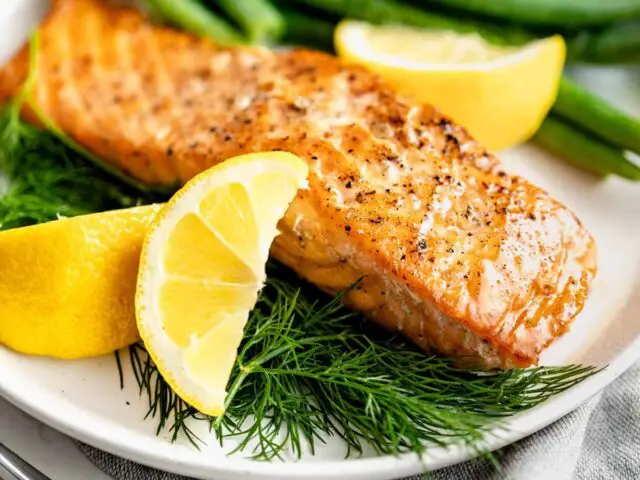
Is Salmon Good for You?
Yes, salmon is a nutritious food that is packed with protein and healthy fats. Salmon is an excellent source of omega-3 fatty acids, which are beneficial for heart health. It’s also a good source of vitamin D and selenium. Salmon is low in mercury, making it a safe choice for pregnant women and young children.
How Much Salmon Should I Eat?
The American Heart Association recommends eating two servings of fish per week, including salmon. One serving of salmon is about 3 ounces, or about the size of a deck of cards.
How to Tell When Salmon is Bad?
There are a few telltale signs that salmon has gone bad. First, check the color of the fish. Salmon should be pink or red in color. If it’s brown or gray, it’s probably not fresh. Second, smell the salmon. It should smell mild and slightly sweet. If it smells fishy or sour, it’s time to toss it out. Finally, touch the salmon. It should be firm to the touch and not mushy. If you’re unsure whether or not your salmon is still good, err on the side of caution and throw it out.
How Long Does Canned Salmon Last?
Canned salmon has a shelf life of about two years when stored properly. Once opened, canned salmon will last for about three days in the fridge.
What Fish Taste Similar to Salmon?
If you’re not a fan of salmon or can’t find it fresh, there are a few other fish that have a similar taste. Trout and mackerel are both good substitutes for salmon. They’re both fatty fish with a similar flavor profile. Another option is tuna. While it’s not as oily as salmon, it has a similar taste and texture.
Raw vs Cooked – which is better?
There are pros and cons to eating both raw and cooked salmon. Raw salmon contains more omega-3 fatty acids, which are beneficial for heart health. It’s also a good source of vitamin D and selenium. Salmon is low in mercury, making it a safe choice for pregnant women and young children. However, raw salmon may contain bacteria that can cause food poisoning. Cooked salmon is safer to eat, but it doesn’t have as many nutrients as raw salmon.
Canned vs fresh salmon:
Canned salmon is a convenient and affordable option, but it doesn’t have the same nutritional value as of fresh salmon. Canned salmon is lower in omega-3 fatty acids and other nutrients. It also contains more sodium than fresh salmon. If you’re looking for the healthiest option, choose fresh salmon. But if you’re on a budget or short on time, canned salmon is a good alternative.
Does salmon taste like tuna?
No, salmon and tuna have different flavor profiles. Salmon is a fatty fish with a mild, slightly sweet flavor. Tuna is a leaner fish with a more assertive flavor. They can be used interchangeably in recipes, but they will not taste the same.
What does salmon roe taste like?
Salmon roe has a mild, slightly sweet flavor with a delicate texture. It’s often used as a garnish or to add flavor and color to dishes.
What Does Pink Salmon Taste Like?
Pink salmon is a type of wild salmon that has a mild, slightly sweet flavor. It’s lower in fat than other types of salmon, so it can be a bit dry if not cooked properly. Pink salmon is often used in canned salmon products.
Conclusion
Salmon is a nutritious, delicious fish that is packed with protein and healthy fats. If you are considering adding seafood to your regular diet, then salmon should be at the top of your list! Not only is it a healthy option, but it is also versatile and can be cooked in many different ways. When shopping for salmon, look for fresh, wild-caught fish. And if you’re not sure how to cook it, don’t worry – there are plenty of easy recipes out there. So go ahead and give salmon a try – your taste buds (and your health) will thank you!
Learn More About Grilling
If you want to learn more about grilling, check out these other helpful resources!

